There is no formula for cow-calf contact systems. Farmers adjust their system to their barn equipment or to their personal vision. Therefore, many different systems have developed.
On the Thünen Institute's research farm in Trenthorst, the calves' area is directly adjacent to the dairy barn. Access of the calves to their mothers can be controlled via a selection gate. In most cases, the calves have contact with their mothers all day long (permanent contact), but they can also withdraw to the separate calf area at any time. They take advantage of this especially when animals in heat cause trouble in the barn or the cows are driven into the milking parlor.
What combinations are possible?
Whether it is possible to milk more milk through half-day contact (the calves only have contact with their mothers during the day or overnight) was tested in a study Trenthorst. However, it was found that the daily milk yield was not higher than that of cows that had permanent contact to their calves. The extent to which half-day contact prepares calves for weaning is currently being investigated.
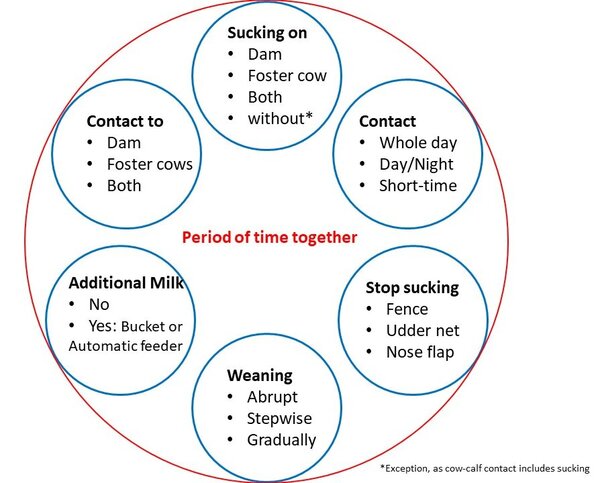
Another step in this direction is limited contact (short-term contact). Here, cow and calf are left together only for a limited time - a maximum of one hour, usually twice a day - either before or after milking. Our research has shown that the calves are able to satisfy their sucking needs even in this short period of time, so that cross-sucking of the calves is virtually non-existent.
Other farms rely on foster cows that suckle two to three calves. In most cases, these cows are then no longer milked and the calves can stay with their foster mothers all day. To provide mother contact for the calves, but reduce the stress of separation to a minimum while milking the cows' milk completely as early as possible, some farmers have introduced the combination of dam and foster-cow-calf contact.
Young calves are placed with their dams in a "mother-child group" where each dam also raises two other alien calves. When a cow and her newborn join the group, a cow that has been with the group for longer a longer period leaves the group. Thus, the calf has to separate from its mother early, but can continue to suckle at a foster cow. In the dam-foster-cow combination, it is also possible to leave the calves with the cows all day or to allow contact only twice a day and still milk the cows.
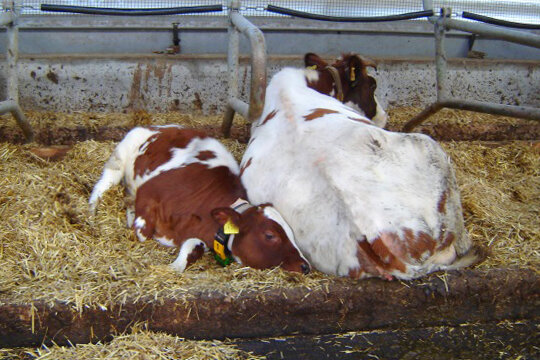
The calf can stay with its mother all day during the suckling period. Prerequisite: The dairy barn must be suitable for calves, i.e. no slatted floors.
Advantages
- High weight gain of the calves
- Contact with other adult animals
- No cross-sucking
Disadvantages
- Disturbed milk ejection during machine milking
- Stress when separating cow and calf
- Calves may run wild without much human-animal contact
The calf has contact with the cow either during the day (between morning and evening milking) or at night (between evening and morning milking). Prerequisite: The barn area must be suitable for calves, i.e. no slatted floors.
Advantages
- High weight gain of the calves
- More milk can be machine milked in one milking time
- Contact with other adult animals
- No cross-sucking
Disadvantages
- Disturbed milk ejection during machine milking
- Stress when separating cow and calf
- Without much human-animal contact feral calves possible
- No normal sucking behavior during contact at night
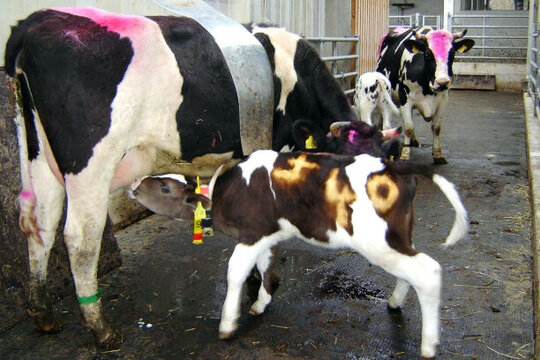
The calf has contact with the cow at least twice a day during the suckling period. Prerequisite: A meeting space
Advantages
- High weight gain of the calves
- No cross-sucking
- Much human-animal contact
Disadvantages
- Disturbed milk ejection during machine milking
- Stress during separation of cow and calf
- Hardly any contact with other adult animals
- Sucking frequency is dictated to the calf
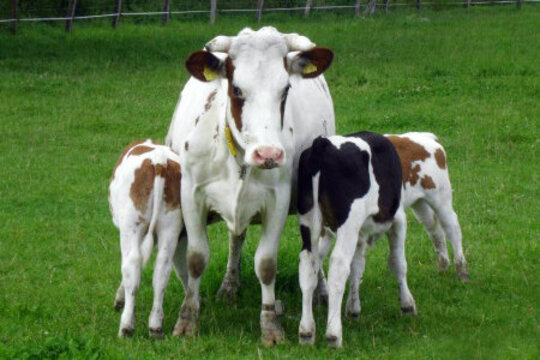
Calves are separated from their dams during the first week after birth and have then contact to foster cows all day.
Advantages
- Permanent contact with the foster cows
- Contact with other adult animals
- Saleable milk yield increased
Disadvantages
- Not all calves are equally accepted by the foster cow
- Possible teat injuries in foster cows
- Without much human-animal contact, calves may run wild
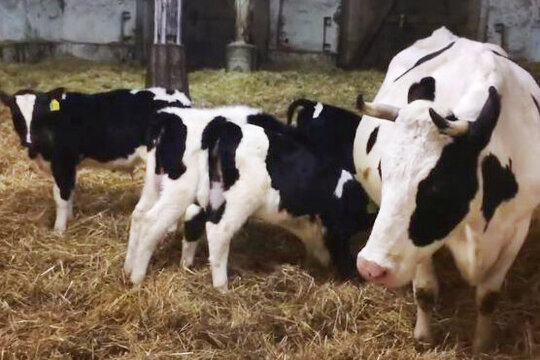
In addition to her own calf, the cow also nurses other calves. When a new dam joins the group, another cow is taken out and her calf is cared for by a foster cow. All contact time variants are possible.
Advantages
- Calves have longer contact to their dam
- Separation from mother and weaning of milk proceeds in two stages
- Contact with other adult animals
- Saleable milk yield increased
Disadvantages
- Older calves can displace younger calves
- Possible teat injuries in foster cows
- Without much human-animal contact, calves may run wild

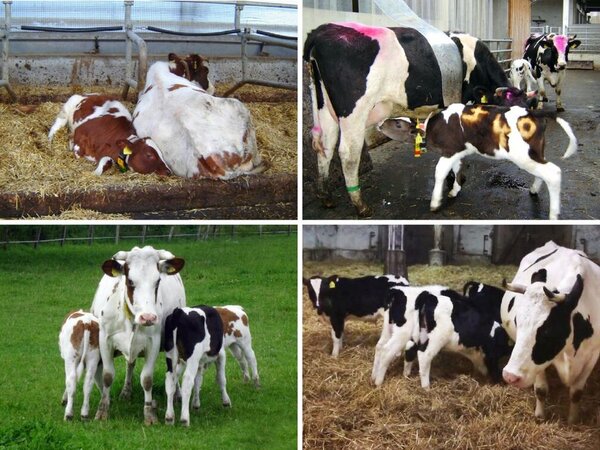
![[Translate to English:] Logo des Bundesministerium für Ernährung und Landwirtschaft](/media/allgemein/logos/BMEL_Logo.svg)